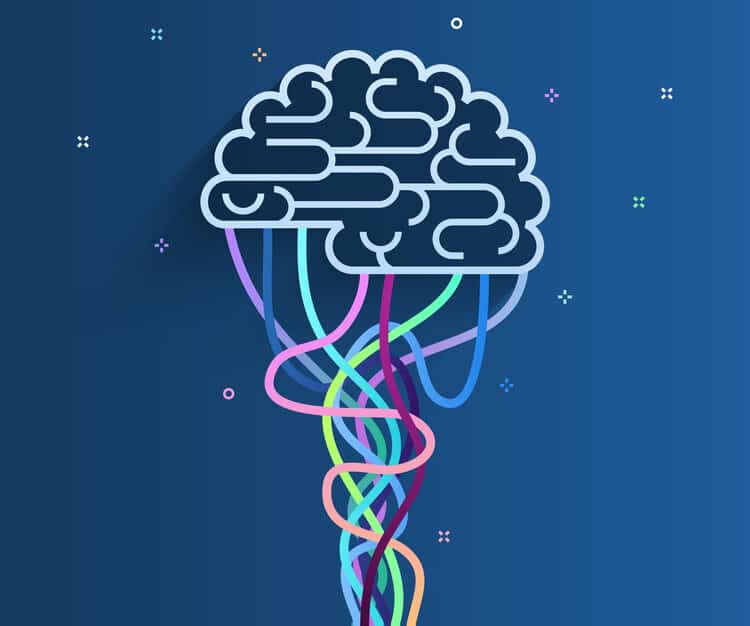In our second installment of the Mastering AI Agents in Healthcare series, we explore one of the most critical—and chronically under-optimized—areas of healthcare operations: care transitions.
Care transitions—the handoff points between hospitals, primary care, post-acute facilities, and payers—represent some of the most fragile and high-cost moments in a patient’s journey. Despite significant investments in electronic health records (EHRs), care management platforms, and interoperability initiatives, these moments remain highly susceptible to miscommunication, delays, and errors. The impact is tangible: avoidable readmissions, misaligned care plans, and administrative waste.
In today’s climate—marked by labor shortages, financial constraints, and the push toward value-based care—healthcare organizations can no longer afford fragmented, reactive workflows. What’s needed is a fundamentally new approach: one that is intelligent, coordinated, and scalable.
This blog draws directly from our latest strategic guide, How to Transform Care Transitions with Multi-Agent Systems, which offers a blueprint for using Agentic AI to close coordination gaps and orchestrate transitions with precision. We encourage you to download the full guide for real-world use cases, implementation frameworks, and architectural diagrams that bring this approach to life.
Building on the foundational concepts introduced in our first post—where we demystified AI agents and agentic AI—we now turn to how multi-agent systems can rewire care transitions to deliver seamless, data-driven experiences that benefit patients, providers, and payers alike.
Agentic AI as a Modern Response to Systemic Issues in Healthcare
Agentic AI offers a pragmatic and forward-looking response to the systemic issues that have long hindered care coordination. Unlike traditional automation tools that execute rigid workflows, agentic AI enables autonomous, context-aware agents that coordinate across siloed systems and teams without requiring full interoperability. These agents are built to operate independently, making real-time decisions, automating tasks, and surfacing insights based on structured and unstructured data.
This paradigm shift matters. Agentic AI does not merely automate tasks; it intelligently orchestrates healthcare operations, ensuring care teams, patients, and payers stay aligned through every transition.
Why Care Transitions Remain a Blind Spot
Healthcare organizations have long understood the importance of care transitions, yet few have managed to optimize them at scale. Fragmented data systems, manual reconciliation processes, and lack of real-time communication are just a few of the barriers that limit progress.
For providers, this often manifests in:
- Incomplete discharge summaries
- Missed follow-up appointments
- Inconsistent communication across care teams
For payers, the consequences include:
- Misaligned care plans
- Redundant or unnecessary treatments
- Delayed claims and administrative inefficiencies
These are not isolated issues; they are symptoms of a broader structural gap in how healthcare organizations manage information, coordinate stakeholders, and measure outcomes during transitional periods.
How Multi-Agent Systems Rewire the Most Fragile Points in Healthcare
Multi-agent systems are composed of specialized AI agents that work in concert to solve complex, multi-step processes. Each agent is responsible for a specific function—data aggregation, care plan reconciliation, patient engagement, monitoring, or team coordination. Together, they create a continuous feedback loop, enabling dynamic updates, personalized communication, and proactive interventions.
Unlike monolithic automation tools that rely on end-to-end system integration, multi-agent systems are designed for flexibility. They sit atop existing infrastructure and wrap around EHRs, claims systems, and other digital platforms to deliver real-time intelligence and automation.
A New Operating Model for Healthcare
Below is a comparison of traditional care transition workflows and those powered by multi-agent AI systems.
Before Agentic AI
- Manual updates to care plans
- Reactive communication with patients
- Disconnected data across teams
- Time-intensive administrative reviews
After Agentic AI
- Real-time care plan updates and coordination
- Proactive, personalized patient engagement
- Unified data visibility for all stakeholders
- Automated discharge planning and workflow execution
This transformation is not hypothetical. Early adopters are seeing measurable improvements across key performance indicators, including reductions in readmissions, faster care reconciliations, and improved STAR ratings.
Real Agents Delivering Real Outcomes
Use Case Example: AI-Driven Hospital Discharge Management
The Challenge
Hospital discharge is a critical juncture in patient care, yet it is often marred by incomplete, outdated, or poorly communicated care plans. This gap leads to preventable readmissions, increased costs, and patient dissatisfaction. Nationally, nearly 1 in 5 patients are readmitted within 30 days, costing the U.S. healthcare system an estimated $41 billion annually.
Agentic AI Solution
- Discharge Agent:
Synthesizes and verifies data from EHRs, generating discharge summaries that meet compliance and clinical standards. Recent studies from UCSF demonstrate that AI-generated discharge summaries are as accurate and comprehensive as those written by physicians, significantly reducing the documentation burden on clinicians, 44% of whom report being too busy to complete high-quality summaries. - Coordination Agent:
Delivers real-time notifications to follow-up care teams, ensuring seamless transitions. AI-driven care coordination tools have been shown to reduce hospital readmissions and improve patient outcomes by streamlining communication and resource allocation. - Engagement Agent:
Delivers personalized, easy-to-understand instructions and reminders to patients, tailored to their literacy level and language needs. AI-powered communication tools ensure patients receive clear, actionable information, which is proven to reduce confusion and improve adherence to post-discharge plans.
Outcomes
Implementing AI-driven tools for discharge planning and care transitions has shown measurable impact across key metrics: hospital readmissions have dropped by up to 30%, while AI-powered education and multilingual chatbots significantly improve patient adherence and satisfaction. Operationally, automation of discharge workflows reduces average length of stay by 11% and increases bed turnover by 17%, delivering both clinical and financial gains.
Use Case Example: AI-Enabled Post-Acute Care Coordination
The Challenge
Transitions from hospital to post-acute care are fraught with miscommunication and data gaps. These breakdowns can lead to treatment delays, overlooked complications, and higher rates of avoidable readmissions. National studies show that post-acute care patients are at increased risk for adverse events due to fragmented data exchange and limited provider collaboration. Manual processes and outdated referral systems further slow the handoff, jeopardizing patient outcomes and increasing administrative burden.
Agentic AI Solution
- Handoff Agent:
Facilitates secure, standards-based data sharing between hospitals and post-acute providers using HL7 and FHIR protocols. Initiatives like the PACIO Project demonstrate how FHIR-based APIs can enable seamless, interoperable exchange of patient-level cognitive, functional, and care plan data across disparate health IT systems, ensuring all care team members have up-to-date, actionable information. - Monitoring Agent:
Continuously tracks patient progress using real-time data from wearables and facility systems. AI-powered remote monitoring detects subtle changes in vital signs or activity levels, triggering early alerts for clinicians and enabling timely intervention before complications escalate. For example, rehabilitation therapists can remotely monitor recovery metrics, such as mobility or grip strength, and adjust care plans dynamically based on real-world patient performance. - Engagement Agent:
Automates patient communications related to rehabilitation schedules, medication adherence, and follow-up appointments. AI-driven platforms deliver personalized reminders and educational content, empowering patients to stay engaged in their recovery and reducing the need for manual outreach by staff.
Outcomes
AI-powered care coordination is delivering measurable improvements across the continuum. Enhanced data sharing and real-time monitoring have led to more personalized care plans, 12% fewer 30-day readmissions, and faster recovery times through early intervention. At the same time, automated alerts and communication tools reduce manual follow-ups, cutting transition delays and documentation time, freeing clinicians to focus more on patient care.
Architecting a Multi-Agent AI System for Scalability
To successfully deploy multi-agent systems, organizations must think in terms of modular architecture and phased implementation.
A typical system includes the following layers:
- Foundational Data Layer:
Aggregates and normalizes data from EHRs, claims platforms, and third-party sources. - AI Decision Layer:
Leverages predictive analytics and machine learning for real-time risk assessment and decision support. - Data Interaction Layer:
Enables real-time data exchange through APIs and streaming services. - Intelligent Agent Layer:
Hosts and manages the agents responsible for task automation and orchestration. - Application Layer:
Provides user-facing dashboards and management tools for clinical and administrative teams.
This architecture is built to scale, adapt, and evolve with the organization’s needs, ensuring long-term sustainability.
Phased Implementation to Start Small and Scale Smart
Healthcare leaders should approach the deployment of Agentic AI with a structured, phased strategy—but most organizations don’t yet know if they’re truly ready. Understanding your starting point is essential. Our Building Readiness for AI Agents in Healthcare eBook offers a clear framework to assess organizational readiness, align teams, evaluate data maturity, and eliminate barriers to successful implementation.
In addition, we provide proven blueprints and AI accelerators to help organizations move confidently from initial assessment to enterprise-scale deployment.
Assessment Phase
- Identify inefficiencies in current care transition workflows
- Evaluate IT and data infrastructure readiness
- Establish baseline metrics for improvement
Design Phase
- Define agent roles and integration points
- Align with governance and compliance frameworks
- Establish a phased rollout plan with prioritized use cases
Pilot Phase
- Launch targeted pilots such as discharge management or payer-provider care reconciliation
- Track KPIs including readmission rates, cost savings, and patient engagement
- Refine agent behavior based on real-world feedback
Scaling Phase
- Expand deployment to additional workflows and care settings
- Optimize performance using data-driven insights
- Track long-term impact on outcomes, efficiency, and cost reduction
The Adoption Cliff - and How to avoid it
While the benefits of Agentic AI are compelling, adoption requires thoughtful planning and change management. Partnering with Productive Edge gives healthcare organizations a head start in navigating common barriers with pre-built frameworks, implementation support, and deep domain expertise.
Key challenges include:
- Data Silos: Overcome through use of APIs, data lakes, and standard exchange formats like HL7 and FHIR
- Regulatory Compliance: Ensure built-in safeguards for HIPAA and GDPR compliance
- Change Management: Provide training and demonstrate early wins to build confidence across care teams
- Cost Justification: Start with high-ROI use cases and flexible pricing models to minimize financial risk
Now is the time to move from promise to performance
The momentum behind agentic AI is undeniable. With global investment projected to reach $196.6B by 2034, healthcare is clearly entering an AI-first era—where intelligent systems don’t just support operations but actively drive performance, precision, and coordination at scale. Early adopters are already realizing measurable improvements across care transitions—from fewer readmissions to faster reconciliations and stronger payer-provider alignment.
But care transitions are only one piece of the puzzle.
In the next installment of our Mastering AI Agents in Healthcare series, we turn our focus to a broader, industry-defining shift: value-based care. As healthcare organizations move away from fee-for-service models, Agentic AI offers a powerful enabler for overcoming systemic barriers—streamlining administrative complexity, enhancing collaboration, and aligning incentives around outcomes.
Continue reading to explore how multi-agent systems powered by agentic AI are accelerating innovation for value-based care—and why now is the time to build AI into the very fabric of your VBC strategy.



